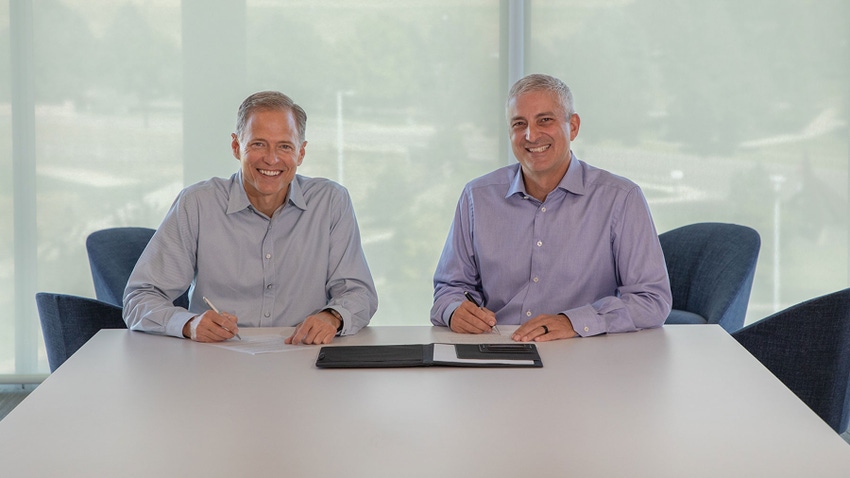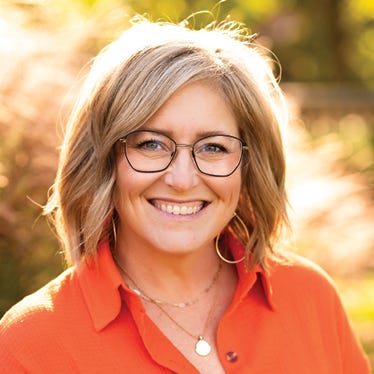
The announcement last week that Agco is purchasing Trimble Ag for $2 billion, creating a joint venture focused on autonomy and retrofit technology, led to a few more questions in farm country. Trimble CEO Rob Painter spoke with Prairie Farmer for a nine-question roundtable.
Were you specifically looking for an ag partner, and then found Agco? For sure. Our precision ag business is over a $500 million business — one of the biggest ag tech businesses in the market. So, for sure, we were thinking about ag partnerships because we think about connecting users, data stakeholders, workflow across an industry continuum. We think about, how do we connect the technologies across that life cycle and the stakeholders that have to come together? That’s how you really transform work and make work, work — to really move from optimizing tasks to optimizing systems.
What was your first meeting with Agco CEO Eric Hansotia like? Was there a napkin? You’ll enjoy this! Our first meeting was a couple years ago at the Farm Progress Show. Out of that was born a friendship and a relationship, and we eventually turned an idea on a back of a napkin to a piece of paper, to a whiteboard, to an agreement. And it was just so clear that we were better together. Nobody but Agco would come close to that.
Does Trimble want to be in agriculture, if it’s selling off 85% of its ag business? We are very much in the ag business. Not only do we have an ongoing ownership stake in the entity, we also have this ongoing supply arrangement. Doing both of those things keeps us in the ag business. We have some dealers that cross our survey business with our agriculture business, which means we have some mixed distribution footprints that we’re very committed to seeing move forward. So, we’re in.
Can you explain the math behind this deal and how the value proposition works — $2 billion for a $500 million business? Trimble Ag’s revenue is actually $535 million. We’ve created a NewCo, which would be the joint venture; we don’t have a name for it yet. Trimble contributed the majority of our agriculture business, holding back some of our GPS technologies because they’re used all over Trimble. So we’ll be a supplier to the joint venture. Agco contributed the JCA Technologies business, which is their autonomy business. So that became the perimeter of the joint venture. In doing so, Agco paid Trimble $2 billion for an 85% stake in that venture. They have 85% of this NewCo; we hold 15%. We each contributed some assets, but ours are bigger and therefore worth a lot more money, so they paid us for that differential of the value of the assets.
You mentioned a new name for the joint venture. When will that come? I think that’ll come probably early next year. It takes about four to six months to get the regulatory approvals. So we have time to plan during this transitional phase. Just don’t let me have the pen on a name. You won’t like what you get!
What are the biggest advantages of the joint venture for farmers? It’s the ability to be served across the full crop life cycle. They’ll have an easier interface with us through stronger dealers, who are out in the field with the farmers. We can make the dealer’s business better by enabling them to serve a full crop life cycle. And, in so doing, they can serve the farmers better. That’s the virtuous loop of having a great value proposition both for the farmers and for the dealers.
What does this announcement mean for the industry? It’s a transformational joint venture that’s being put together, and it’s a farmer-first venture that’s dedicated to serving mixed-fleet technology in the industry. When Eric [Hansotia] and I mapped the capabilities of our respective precision ag businesses across the crop life cycle, it was pretty extraordinary to see just how much better together we truly are. We think this new entity has the opportunity to transform the industry.
What does it mean for Trimble, as a company? We’re a company with a long history of partnering. Our businesses are in engineering and construction, transportation and agriculture. We invented machine control and guidance in agriculture, which was born out of what we invented for construction equipment. That came out of our origin story of survey technologies for Trimble, in our 45-year history. So it’s transformative for us to create a clear leader in the ag market. We have joint ventures with Caterpillar, in civil construction; we have a joint venture with Hilti in building construction. We have a joint venture with Nikon in our geospatial business. We believe in partnering to go after big ideas and to solve big, complex problems.
What do you want farmers to know about the joint venture? I would love folks to understand that this is something that we’re excited about and believe in. We didn’t have to do this, we wanted to do this. We saw the needs out there that farmers have, and when we put this on paper, us together was better for the farmers, better for the dealer. If it’s those things, then it’s better for our employees to be part of a big winning team. And if you do all those things right, good things will happen for the shareholders.
About the Author(s)
You May Also Like






